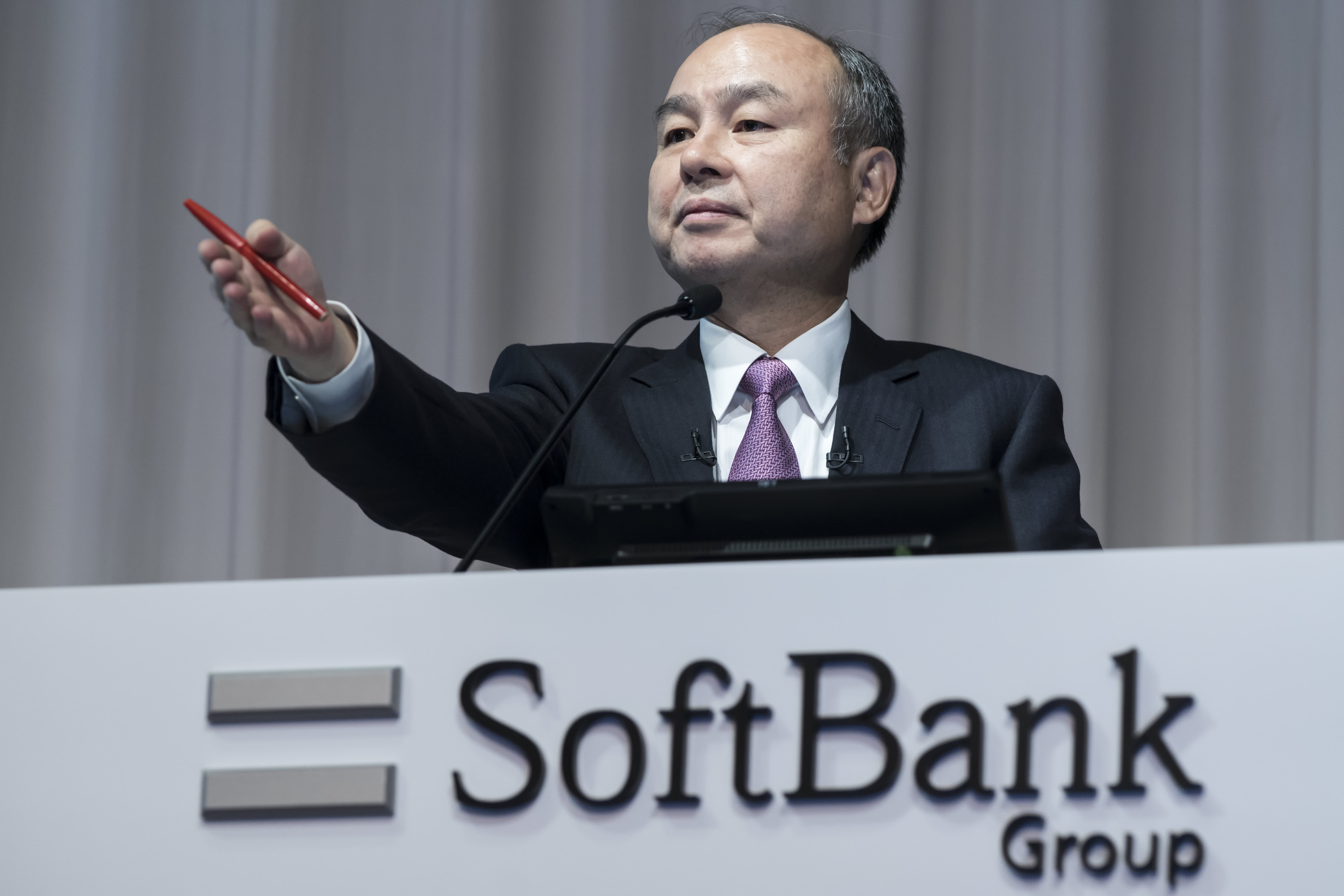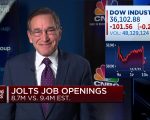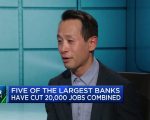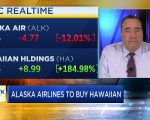
SoftBank Founder Masayoshi Son is pictured here in 2019 during an earnings presentation.
Tomohiro Ohsumi | Getty Images
SoftBank posted an investment gain on its Vision Fund in the fiscal second quarter but booked another quarterly loss.
Here’s how SoftBank did in the September quarter against LSEG estimates:
- Net sales: 1.67 trillion Japanese yen ($11 billion) versus 1.6 trillion yen expected
- Net loss: 931.1 billion yen ($6.2 billion) versus an expected loss of 114.1 billion yen
For the first half of SoftBank’s fiscal year, it posted a 1.41 trillion loss ($9.3 billion). This compares to a 3 trillion yen profit in the same period last year. SoftBank said a weaker yen hit the company since it has a lot of U.S.-dollar denominated liabilities.
SoftBank’s Vision Fund posted an investment gain of 21.3 billion yen, its second straight quarter of gains. The company said this was due to a gain arising from the sale of shares in chip designer Arm to a subsidiary of SoftBank.
This offset a decline in the value of companies SoftBank is invested in, such as Chinese artificial intelligence firm SenseTime.
“The environment is still tough … but we believe we have hit a bottom and are making good moves towards positive figures,” SoftBank Chief Financial Officer Yoshimitsu Goto said on Thursday during an earnings presentation.
WeWork bankcruptcy hit
However, the overall SoftBank Vision Fund segment posted a pre-tax loss of 258.86 billion yen.
SoftBank recorded a loss of 234.4 billion yen for the half-year period related to the investment and financial support provided to WeWork, which filed for Chapter 11 bankruptcy protection in the U.S. this week. SoftBank was one of the biggest backers of the co-working space firm, which tried and failed to go public five years ago.
Critics of SoftBank’s investment strategy point toward WeWork as an example of a lack of discipline, at times, from the Vision Fund. SoftBank’s high-profile founder Masayoshi Son once said WeWork is at the forefront of a “revolution” in the way people work.
Goto addressed the WeWork bankruptcy and said SoftBank should learn lessons from it.
“First of all, I am very story to hear that. As a company we need to accept this reality and also need to learn the lesson from this for our future investment activity,” Goto said.
SoftBank’s flagship tech investment arm had a rough time in the fiscal year that ended in March this year, posting a record loss of around $32 billion. A slump in tech stock prices and the souring of some of SoftBank’s bets in China were to blame.
In the June quarter, the Vision Fund posted its first investment gain in five consecutive quarters, signalling early signs of growth again. This has coincided with recoveries in the prices of technology stocks.
Last year, Son noted the firm would go into “defense” mode, slowing the pace of its investment and being more cautious. In June, Son flagged a shift into “offense” mode, touting his excitement around the potential of artificial intelligence technology.
“We are investing in AI and that’s the main strategy for our company,” Goto said.
Son, who used to lead SoftBank’s earnings presentations with colorful presentations, has not been present for several quarters. But Son has been “devoting himself and involved in the discussion, how and what is going to be the changes in people’s lives from the AI revolution,” Goto said.
The CFO added that SoftBank wants to be a front runner of the AI revolution.
Chip designer Arm went public in the U.S during SoftBank’s fiscal second quarter. The company acquired Arm in 2016 for around $32 billion at the time. The initial public offering of Arm valued the company at over $50 billion.
Arm on Wednesday reported its first set of results since its IPO, posting an annual rise in revenue for the September quarter. However, the semiconductor firm gave guidance for the December quarter that disappointed investors, sending its shares lower in after-hours trade in the U.S.







